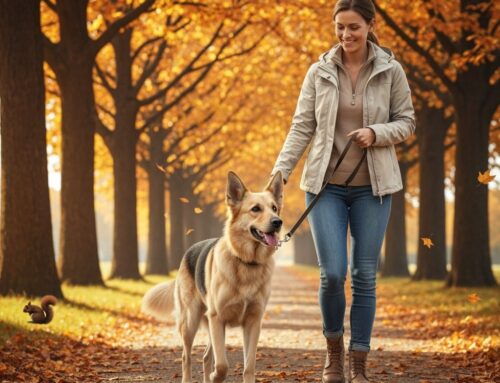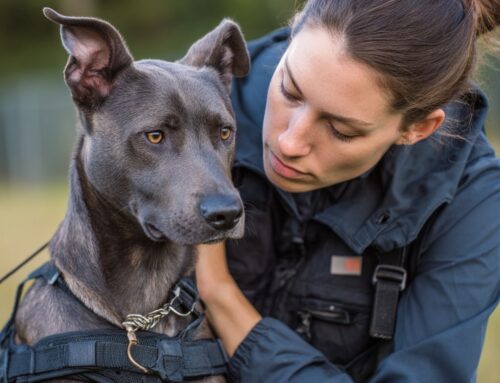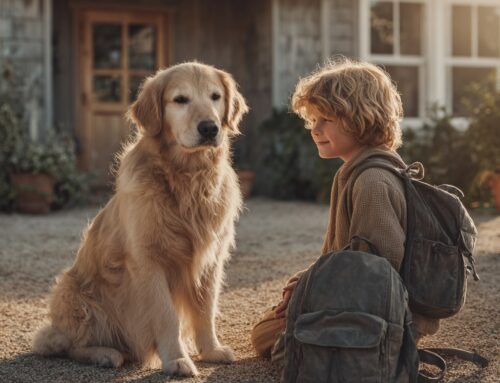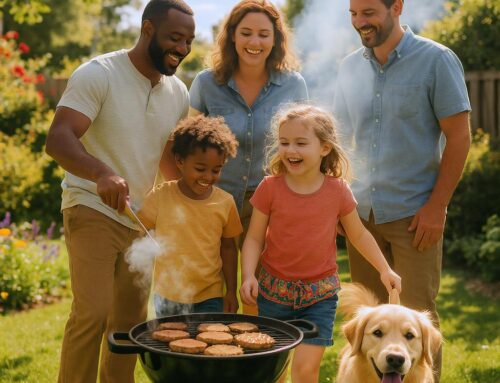Dealing with a dog that exhibits aggressive behavior can be a challenging and emotional experience for pet owners. Canine aggression can manifest in various ways, such as growling, barking, snapping, or even biting. While it may feel overwhelming, it’s important to remember that aggression is often a symptom of an underlying issue, not a reflection of your dog’s character.
Recognizing and addressing aggressive behavior in your dog is vital for ensuring their safety and the safety of those around them. When there are signs of aggressive behavior in dogs, it’s important to respond appropriately to de-escalate the situation and work toward long-term solutions. With patience, understanding, seeing the warning signs and getting the right strategies, you can address these behaviors and help your dog feel more secure.
Identifying the Signs and Causes of Aggressive Behavior in Dogs
Recognizing the early signs of aggression is crucial for addressing the behavior before it escalates. Dogs communicate their discomfort or stress through various signals, including:
- Body Language: Raised hackles, stiff posture, intense staring, or a tucked tail.
- Vocalizations: Growling, snarling, or barking.
- Physical Actions: Snapping, lunging, or dog bites.
These behaviors often indicate that a dog is feeling anxious, fearful, or defensive. To effectively manage aggression, it’s important to understand what’s triggering it.
Understanding the Root Causes of Aggression
Aggression in dogs doesn’t occur without reason—it’s usually a response to specific triggers or circumstances. Identifying the root cause is the first step toward addressing and managing the behavior.
- Fear or Anxiety – Many dogs react aggressively when they feel trapped or threatened which leads to conflict aggression. This is especially common in dogs with past trauma or inadequate socialization.
- Resource Guarding – Some dogs become protective over food, toys, or resting spots, instinctively guarding what they consider valuable.
- Pain or Discomfort – Health issues like arthritis, dental pain, or injuries can make a dog more irritable and prone to aggression. If your dog’s behavior changes suddenly, a vet check is essential.
- Frustration-Based Aggression – Also called “redirected aggression,” this occurs when a dog is unable to reach something they want, leading to heightened emotions and aggressive outbursts.
- Territorial Aggression and Behavior – Some dogs become defensive when they perceive a threat to their home, yard, or even their owner. This type of aggression is often linked to insecurity or a strong protective instinct.
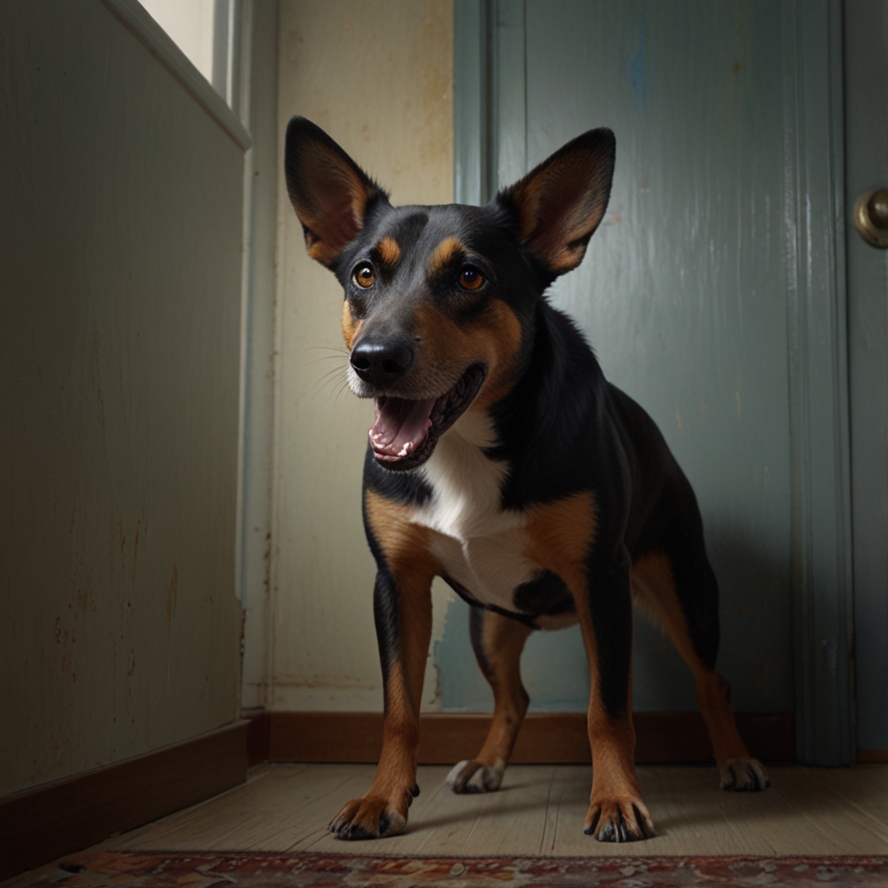
By recognizing these signs and understanding their underlying causes and display aggression, you can take the necessary steps to prevent your dog’s aggressive behavior and create a safer environment for both your dog and those around them.
Immediate Steps to Take When Your Dog Displays Aggressive Behavior
When your dog shows signs of aggression, your response can make a significant difference in preventing escalation and ensuring the safety of everyone involved. Instead of reacting with frustration or fear, it’s important to stay calm and handle the situation thoughtfully. Here’s what you should do to manage aggressive behavior effectively.
Stay Calm and Composed
Your dog feeds off your emotions. If you panic, yell, or make sudden movements, it can heighten their stress and make the situation worse. While it’s natural to feel startled or upset when your dog acts aggressively, try to remain as calm and neutral as possible.
Take a deep breath, speak in a steady and reassuring tone, and avoid making direct eye contact, which some dogs may perceive as a challenge. Instead of reacting emotionally, focus on creating a safe and controlled environment for both your dog and anyone else involved. When you stay composed, your dog is more likely to de-escalate rather than continue the aggressive behavior.
If needed, give your dog some space. Some dogs respond well to a few minutes of quiet time in a familiar area where they feel secure. This allows them to settle down without feeling trapped or cornered.
Create Distance or Remove Triggers
One of the best ways to prevent aggression from escalating is to separate your dog from whatever is causing their reaction. If your dog is lunging at another dog on a walk, calmly turn around and increase the distance between them. If they’re growling over food or a toy, avoid reaching for the item and instead use a distraction, like tossing a treat in another direction, to redirect their attention.
If your dog tends to react aggressively in certain situations—like when strangers visit your home or when they encounter other animals while on the leash—you can prepare in advance by setting up barriers, such as baby gates, crates, or designated safe zones. These spaces provide a buffer that prevents confrontations while allowing your dog to observe from a comfortable distance.
It’s also important to recognize what triggers your dog’s aggression so you can proactively manage it. Common triggers include:
- Other animals (especially unfamiliar dogs)
- Strangers or visitors
- Food, toys, or other high-value resources
- Loud noises or sudden movements
- Being handled in an uncomfortable way (e.g., touching sensitive areas)
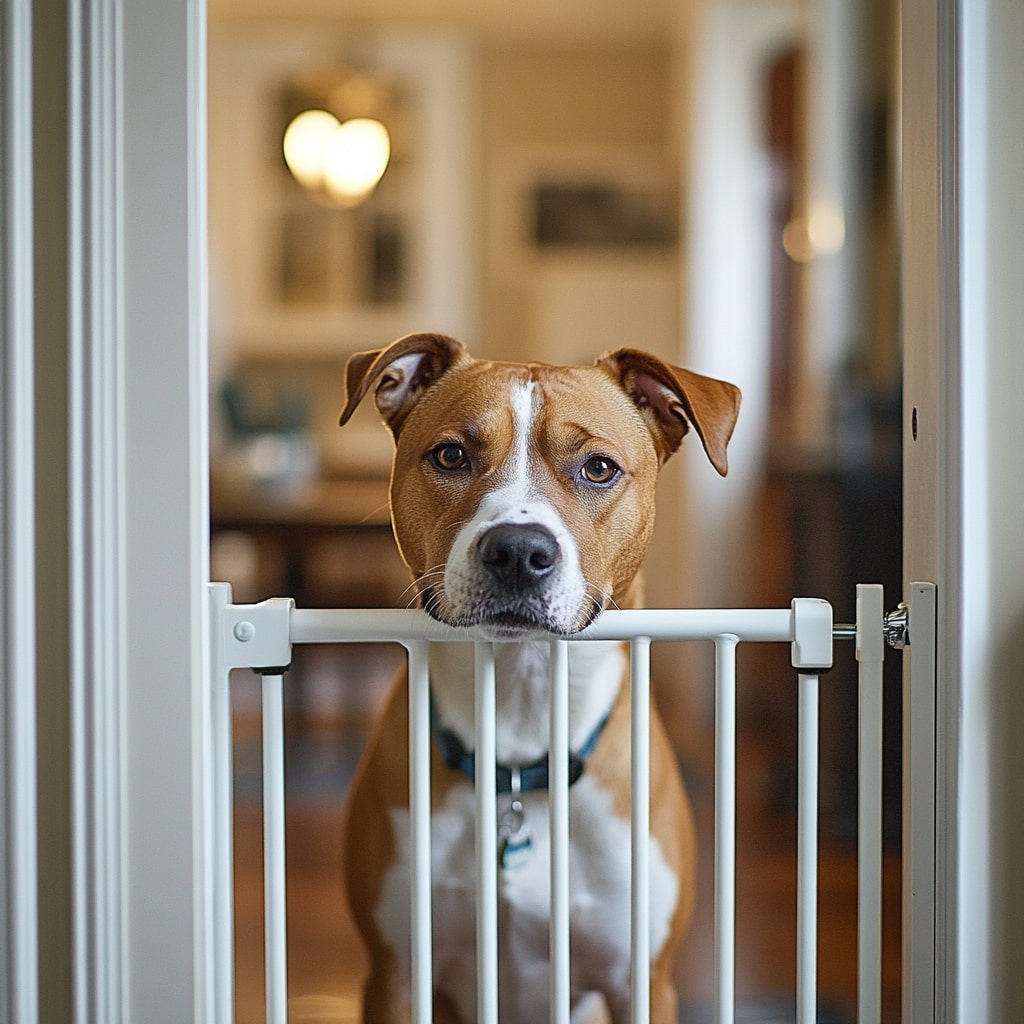
By identifying these triggers, you can take steps to gradually desensitize your dog or modify their environment to prevent negative reactions.
Avoid Punishment—It Can Make Things Worse
It’s understandable to feel frustrated when your dog acts aggressively, but punishment—such as yelling, hitting, or using harsh corrections—can often do more harm than good. Aggression is usually rooted in fear, anxiety, or frustration, and punishing your dog may increase their stress levels, making them even more defensive.
For example, if a dog growls when someone gets too close to their food bowl and they are punished for it, they may learn that warning signs like growling don’t work—leading them to skip those warnings and go straight to biting next time. Instead of punishing, focus on addressing the underlying cause of their aggression and teaching them alternative, positive behaviors.
If your dog growls, barks, or lunges, take it as a sign that they are uncomfortable rather than as an act of defiance. Rather than scolding them, redirect their attention to something positive, like a toy, a command they know (such as “sit” or “stay”), or a calming activity like sniffing or chewing on a bone.
Use Positive Reinforcement to Encourage Good Behavior
Rewarding calm and appropriate behavior is one of the most effective ways to teach your dog how to respond in stressful situations. If your dog remains relaxed when encountering a trigger—like staying calm when another dog walks by or allowing a visitor to enter your home without barking excessively—immediately praise them and offer a reward, such as a treat, a favorite toy, or affection.
Over time, your dog will start associating calm behavior with positive outcomes, making them more likely to react appropriately in the future. This technique is especially useful when working on behavior modification, as it helps build confidence and trust rather than fear and anxiety.
Here are a few examples of how you can use positive reinforcement:
- If your dog stays calm when another dog passes by on a walk, reward them with a treat.
- If they allow you to take a toy from them without growling, praise them and give them a different toy in exchange.
- If they greet a visitor without barking or jumping, offer a reward to reinforce the good behavior.
The key is to consistently reward behaviors you want to see more of while avoiding reinforcing negative behaviors.
Long-Term Strategies to Address Dog Aggression
While immediate actions help manage aggressive outbursts, long-term strategies are necessary to address the root causes and prevent future incidents. By implementing proper training, behavior modification, and professional guidance, you can help your dog develop healthier responses and reduce aggression over time.
Prevent Future Incidents
Managing your dog’s environment while working on behavior modification is essential to keeping everyone safe. Here are some key strategies to minimize risks:
- Use Leashes and Proper Equipment: A well-fitted leash can help prevent aggressive outbursts in public or during interactions with other animals. These tools provide control and prevent your dog from reacting in an unsafe manner while you work on training. Choose equipment suited to your dog’s needs.
- Avoid Triggers When Possible: While training is an ongoing process, reducing your dog’s exposure to known triggers can prevent unnecessary stress. If your dog reacts strongly to specific situations—such as strangers entering the home or unfamiliar dogs on walks—limit their exposure while gradually working on desensitization. Over time, controlled training sessions will help them develop a more positive response to these triggers.
- Supervise Interactions: Always monitor your dog during encounters with children, new people, or other pets. Even a well-trained dog can become reactive in unpredictable situations, so supervision is key to preventing incidents. Use baby gates, leashes, or controlled introductions to ensure safe interactions while your dog continues learning to manage their emotions.

Start Behavior Modification Techniques and Training
Consistent training is the foundation of addressing aggressive behavior. By using structured behavior modification techniques, you can help your dog build confidence and learn appropriate responses.
- Desensitization: This technique involves gradually exposing your dog to their triggers at a manageable level while rewarding calm behavior. For example, if your dog reacts aggressively to other dogs, start by exposing them to a dog at a distance where they remain calm. Gradually decrease the distance over time, ensuring they stay comfortable throughout the process.
- Counterconditioning: Instead of allowing your dog to associate a trigger with fear or aggression, help them form positive associations. For example, if your dog becomes anxious when people approach, pair the experience with high-value treats or praise. Over time, they’ll begin to see the presence of people as a positive experience rather than a threat.
- Teach Coping Mechanisms: Giving your dog clear instructions during stressful situations can help them feel more in control. Commands like “sit,” “stay,” and “look at me” provide your dog with a structured response instead of reacting aggressively. Reinforce these behaviors with rewards to ensure they become reliable coping mechanisms.
Encourage Socialization in a Controlled Way
Proper socialization reduces fear and anxiety, which are common contributors to aggression. However, if your dog has a history of aggression, socialization must be done carefully and at their own pace.
- Introduce New Experiences Gradually: Expose your dog to different environments, people, and animals in a controlled and positive manner. Start with low-stress situations and slowly build up to more challenging ones as your dog gains confidence.
- Use Calm, Well-Trained Dogs for Socialization: If introducing your dog to other animals, choose calm and non-reactive dogs that can help model good behavior. Supervised playdates or controlled parallel walks are great ways to help your dog learn appropriate social cues.
- Respect Your Dog’s Limits: Not all dogs enjoy socializing with others, and forcing interactions can increase aggression. Recognize when your dog is uncomfortable and give them space when needed. The goal is to create positive experiences rather than overwhelming them.
Seek Professional Help When Needed
If your dog’s aggression is severe, unpredictable, or poses a safety risk, professional guidance is highly recommended. Trainers and behaviorists with experience in aggression rehabilitation can provide tailored strategies to address your dog’s specific challenges.
- Consult a Trainer or Behaviorist: Certified professionals can assess your dog’s triggers and create a customized training plan that prioritizes safety and progress. They can also teach you proper handling techniques to manage aggression effectively.
- Get a Veterinary Evaluation: Sometimes, aggression is linked to underlying medical issues such as pain, neurological conditions, or hormonal imbalances. A veterinary exam can rule out health-related causes and ensure your dog receives appropriate treatment if needed.
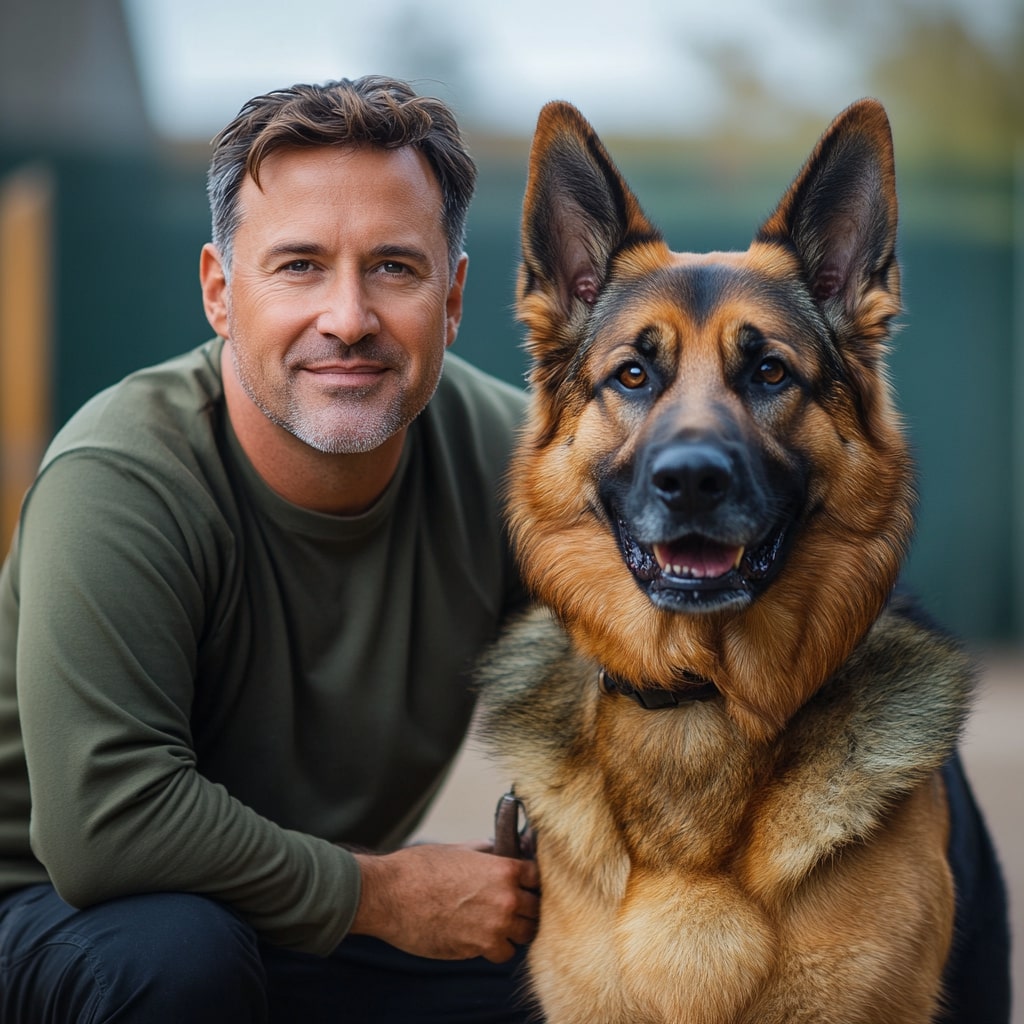
Programs like the Aggression Rehabilitation Program at Performance K9 Training and Boarding provide structured training to address the root causes of aggression. These programs are designed to teach dogs how to respond calmly to stressors while equipping owners with the skills to manage their behavior effectively.
How to Support Your Dog Through Rehabilitation
Addressing aggression is a process that requires commitment, consistency, and patience. Here are some ways to stay on track and support your dog through their aggression rehabilitation journey.
- Be Patient and Stay Consistent: Behavior change takes time, and setbacks are normal. Keep training sessions positive and consistent, reinforcing progress no matter how small. Dogs thrive on routine, so maintaining a structured schedule will help them feel more secure.
- Stick to a Routine: Regular training, exercise, and mental enrichment help reduce anxiety and aggression. Keep meal times, walks, and training sessions predictable to create a sense of stability.
- Reinforce Positive Behavior: Always reward your dog for calm and appropriate responses. Praise, treats, and playtime can reinforce good behavior and encourage them to make better choices.
- Celebrate Small Wins: Every improvement—whether it’s staying calm around a mild trigger or following a command under stress—is progress worth acknowledging. Recognizing these moments helps build your dog’s confidence and reinforces positive behavior.
- Prioritize Safety During Training: Until your dog’s behavior improves, take precautions to ensure safety for both your dog and those around them.
- Use the Right Tools: A leash or muzzle can prevent dangerous incidents while allowing your dog to continue learning in controlled environments.
- Set Boundaries: Create safe spaces at home where your dog can retreat when feeling overwhelmed. This reduces stress and prevents unnecessary confrontations.
- Monitor All Interactions: Keep an eye on your dog during social encounters and intervene if they show signs of discomfort. The goal is to set them up for success rather than expose them to situations they aren’t ready for.
Final Thoughts: Building a Safer, More Confident Dog
Seeing the signs of aggressive behavior in dogs and ultimately helping a dog overcome aggression is a long-term commitment, but with the right approach, patience, and professional support, significant progress is possible. By preventing risky situations, using positive training techniques, and seeking expert help when needed, you can create a safe and structured environment where your dog feels secure and less likely to react aggressively.
Every step you take towards understanding and supporting your dog strengthens your bond and improves their quality of life. With time, dedication, and consistency, your dog can develop better coping skills, making them a calmer and more well-adjusted companion. By staying calm, understanding the root causes, and using effective training techniques, you can help your dog overcome their aggressive tendencies and live a happier, more balanced life.
If you’re struggling to manage your dog’s aggression, consider reaching out to Performance K9 Training and Boarding. Their Aggression Rehabilitation Program offers expert guidance, compassionate support, and proven strategies to help your dog succeed. With the right training and commitment, even the most aggressive dogs can transform into loving and well-adjusted companions. Contact Performance K9 Training and Boarding today for a free consultation!




